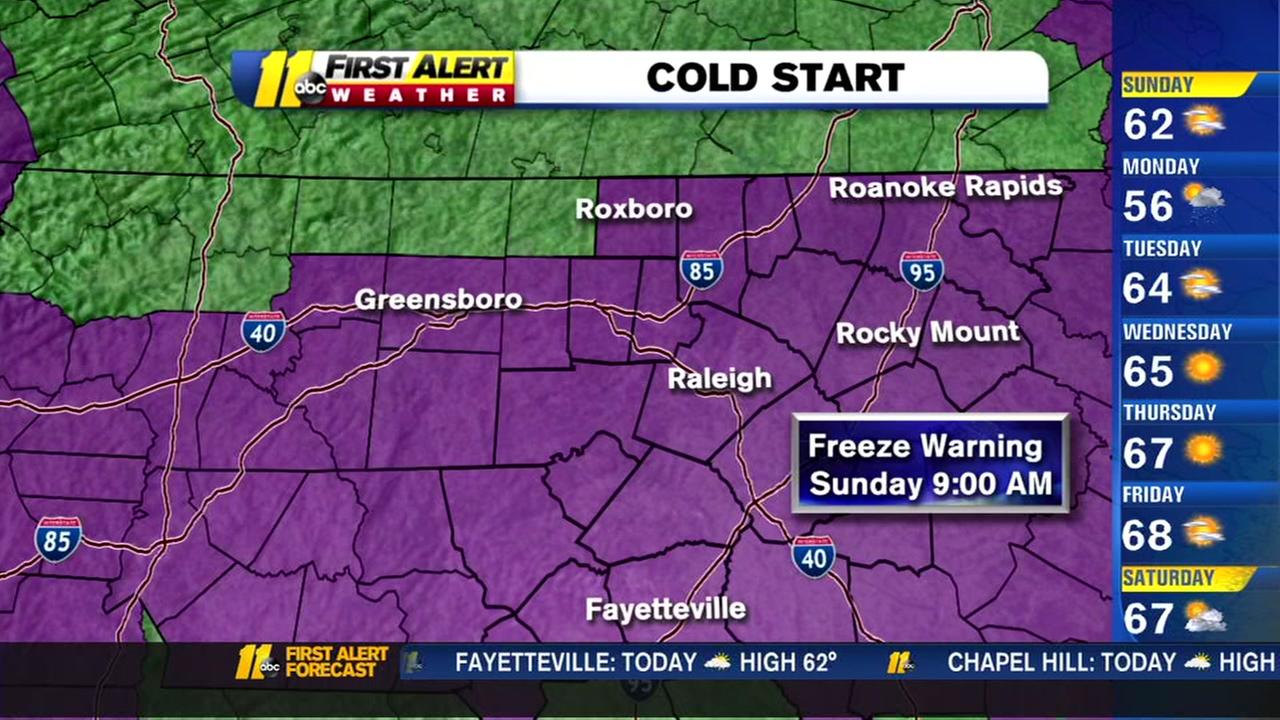

The average annual freeze-free period ranges from 130 days in the mountain areas to 290 days in the warm south. In the rest of the state, the snowfall ranges from 2" (51mm) in the lower coast to 16" (406mm) in the southern mountains. Sleet and snow occur only a few times in the year in the coastal areas, while the high mountain slopes receive up to 50" (1270mm). Summer is the wettest season, while autumn is the driest. The average annual precipitation is 45" (1143mm) in North Carolina and occurs throughout the year. Temperatures vary significantly with altitude in North Carolina. Autumn temperatures are moderate but drop rapidly by the latter half of the season. Spring has pleasant weather compared to the heat of summer. The Sandhills section of southern Piedmont has a relatively warm winter due to sandy soils and rare arrival of snow. The coastal areas are cooler than the inland regions during midsummer, with ocean waters below 80☏ (26.7☌). The winter temperatures are rarely extreme, with January ranging between 20☏ (-6.7☌) to 45☏ (7.2☌) in the lower valleys. Temperatures rarely cross 80☏ (26.7☌) in the mountains in midsummer at altitudes above 900 meters, and the nights are crisp and cool. The conditions are calm, and the skies remain cloudless for extended periods. The Bermuda High-Pressure system dominates the summers in North Carolina. North Carolina has an average elevation of 500 meters above sea level. Elevations stretch from 450 meters to 2025 meters at the summit of Mount Mitchell, the highest point in the state. The Mountain Division comprises the westernmost part of North Carolina and covers one-fifth of the state's area. The Piedmont Division chiefly consists of hard rock and gently sloping hills with sporadic steep ranges that extend to the base of the mountains. The Coastal Plains constitute half the area of the state and consists of flat, swampy lands as well as gently sloping terrain.

North Carolina, the Old North State, has three geographical divisions. The latitude and altitude chiefly influence the climate, along with the warm Gulf Stream and the cold Labrador currents. Georgia and South Carolina to the south, Tennessee to the west, Virginia to the north, and the Atlantic Ocean to the east share borders with the state. The warmest month of the year is July with an average maximum temperature of 9.99 degrees Fahrenheit, while the coldest month of the year is January with an average minimum. North Carolina is a part of the southeastern United States. Raleigh, NC climate is warm during summer when temperatures tend to be in the 70s and cold during winter when temperatures tend to be in the 40s. Summers are hot and humid, while winters are wet and cold. North Carolina climate is mostly humid subtropical (Köppen Cfa) except for a subtropical highland type (Köppen Cfb) on the high slopes of the Appalachian Mountains.


 0 kommentar(er)
0 kommentar(er)
